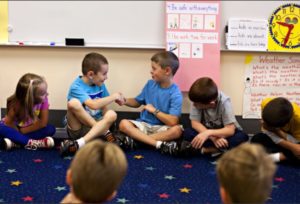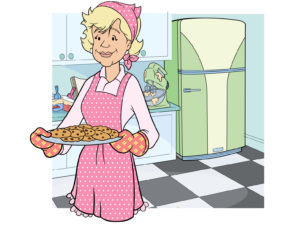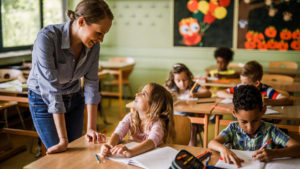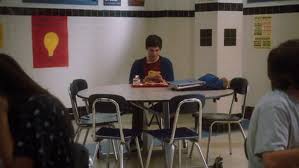After the Capitol riots
 What in the world? Right there, live on TV, images from the recent attack in Washington, D.C. show us scenes that are hard to believe. Here we are w
What in the world? Right there, live on TV, images from the recent attack in Washington, D.C. show us scenes that are hard to believe. Here we are w atching, in real time, as a political rally turns into an angry mob. Suddenly, this swarm of people storm the nation’s Capitol building and overwhelm police. It can’t be real. Could this be happening in America?
atching, in real time, as a political rally turns into an angry mob. Suddenly, this swarm of people storm the nation’s Capitol building and overwhelm police. It can’t be real. Could this be happening in America?
Then, we notice our elected officials are huddled together fearing for their own safety. That is just way too scary. Only now are we realizing how dangerous the situation was!
Like many of you, folks in Shady Pines are still in shock. They write to me and say how sad and angry they are about this awful event. I’m Zulah Talmadge,  editor of The Shady Pines Gazette News. Being upset is understandable. But what can we do to cope? And, how should we help children understand how to be good when they see adults behaving so badly?
editor of The Shady Pines Gazette News. Being upset is understandable. But what can we do to cope? And, how should we help children understand how to be good when they see adults behaving so badly?
Then it hit me! We’re a Southern Town. And if there’s one thing Southerners know, it’s manners. Maybe it’s time we set about making sure we treat one another better. Let’s start with some ideas from Betsy Cribb, a writer for Southern Living magazine.

Back to basics
Ms. Cribb reminds us that from the time Southern children are old enough to talk, they’re taught the importance of minding their p’s and q’s, saying “yes ma’am” and “no sir,” and treating others with kindness and respect. And they’re expected to continue minding those manners long after they leave the nest. After all, you’re never too young or too old to be polite. Here, nine etiquette lessons every child should learn this year
How to introduce themselves
 You only get to make one first impression, and how you introduce yourself often determines the kind of impression you make. This lesson is essential as it’s a three-for-one learning opportunity: Showing children how to properly introduce themselves teaches them first, to share their first and last names with their new acquaintances; second, to look that person directly in the eye when speaking to them; and third, how to give a good handshake (a firm, but gentle squeeze is the name of the game).
You only get to make one first impression, and how you introduce yourself often determines the kind of impression you make. This lesson is essential as it’s a three-for-one learning opportunity: Showing children how to properly introduce themselves teaches them first, to share their first and last names with their new acquaintances; second, to look that person directly in the eye when speaking to them; and third, how to give a good handshake (a firm, but gentle squeeze is the name of the game).
How to graciously receive gifts
It’s no secret that young children don’t have much of a filter, but it’s important to teach them to accept gifts—even the ones they don’t like—with a “thank you” and a smile. Teach them well, and it’ll save you from serious embarrassment when they unwrap birthday socks from dear Aunt Linda…for the third year in the row. Once your children are old enough to write, buy them some stationery and teach them the art of the handwritten thank you note.
How to give people space
While the pandemic has certainly given us a new appreciation for maintaining distance, it’s always prudent to teach children to respect others’ personal space: That means no hovering, no close-talking, and minding boundaries.
How to behave at the dinner table
 Whether eating at home, a restaurant, or their grandmother’s house, children should know the basics of dining etiquette and table manners. No, they don’t need to know the difference between a dinner fork and a salad fork at the tender age of five, but they should know how to politely ask for someone to fill their plates or share the dinner rolls (after all, while we love To Kill a Mockingbird’s spunky Scout, asking someone to “pass the damn ham, please” just won’t do). Children should also learn to keep their napkins in their laps, their elbows off the table, and their mouths closed while they chew.
Whether eating at home, a restaurant, or their grandmother’s house, children should know the basics of dining etiquette and table manners. No, they don’t need to know the difference between a dinner fork and a salad fork at the tender age of five, but they should know how to politely ask for someone to fill their plates or share the dinner rolls (after all, while we love To Kill a Mockingbird’s spunky Scout, asking someone to “pass the damn ham, please” just won’t do). Children should also learn to keep their napkins in their laps, their elbows off the table, and their mouths closed while they chew.
How to behave online
With screens becoming ubiquitous in children’s lives, it’s more important than ever to remind them that manners matter as much online as they do in person. That means only writing, sharing, and posting things that they’d be comfortable with their teacher, preacher, and grandmother seeing.
How to accept compliments
Here’s a lesson we adults could stand to learn, too. It’s tempting to shrug off a compliment with a self-deprecating joke, a throwaway compliment volleyed in return, or an “oh hush;” but a sincere compliment should always be accepted with a simple, “Thank you. That’s so kind of you to say.” Children who know how to politely accept compliments grow up to be adults who know how to politely accept  compliments.
compliments.
How to offer compliments
Equally important to teaching children how to accept compliments is teaching kids how to give them. Sincerity should always be the driving force behind compliments, and while praising someone’s hair or dress is nice, it’s the genuine acknowledgement of a person’s best character traits, like thoughtfulness or positivity, that rank the most memorable.
How to be inclusive
Equip your children to make others feel welcome. Teach them the importance of inviting those who are left out to join the playground game and those who are sitting alone to pull up a seat at the lunch table. It’s what Southern hospitality is about.
How to show respect to others
 Etiquette and good manners are all rooted in the most important lesson children should learn: how to treat people with respect. Everyone deserves to be shown kindness and respect, whether that’s through saying “yes sir” and “no ma’am,” offering a smile, or holding the door.
Etiquette and good manners are all rooted in the most important lesson children should learn: how to treat people with respect. Everyone deserves to be shown kindness and respect, whether that’s through saying “yes sir” and “no ma’am,” offering a smile, or holding the door.
Of course, at the end of the day, children will be children, and sometimes, when things go awry, all you can do is show your children—and other parents with misbehaving children—a little grace and a little patience. That’s just good manners.
We know that here in Shady Pines Story Town we try our best to live by these examples. No one’s perfect. But here’s to serving up more kindness and caring this year while celebrating the best in all of us!

Well said.
Zulah you’re the best.
The hardest thing about the attack on the Capitol is seeing my son try to understand it. Thank you for giving me something to talk to him about.
It’s also good to remember that children learn as much (if not more) from what we do as from what we say. So keep setting a good example!
Zulah to the rescue once again. I wish there was a real life Shady Pines Gazette.
Using the Southern approach to better behavior. Way to go.
Thank you for making a “teachable” moment for kids out of this horrific event. I have been trying to wrap my own head around it.
I was wondering where you were going with this post. I liked it.
I like the way you didn’t make this about politics. Kudos Shady Pines.
This is very good. Such a tough subject for any of us.
I like the way you include real life issues into this cartoon world. It makes it easy to talk to the kids about difficult topics like this one.
I’m from the South and really liked these examples. The illustrations from Shady pines are wonderful.
Really good information.
I really appreciate this post. Haven’t known how to talk to my daughter about this incident. She’s 6 years old. It scared her a lot.